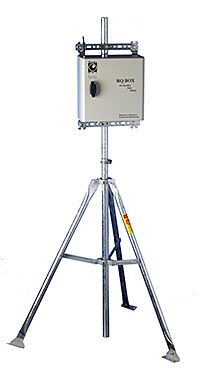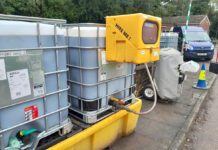By Duncan Carter, Sales Engineer at Enviro Technology Services
When a gas leak at a chemical plant in Rouen, France caused mercaptan to waft across the Channel into Kent and Sussex earlier this year, public response was overwhelming. The National Grid reported that it would usually expect 8,000 calls from around the country in a day. By 10.00am on the morning of ‘Le Pong’, it had received 60,000.
A growing awareness of both the environment and individual rights has meant that people are more likely to complain about an odour issue. The explosion in social media means that such complaints can be both coordinated and LOUD.

The old adage about industry only being able to manage what it measures is applicable to odour in the same way as other forms of air pollution. Smell is – of course – notoriously tricky to measure. For a start, it’s highly subjective. The French gas cloud was variously described in “nose” witness accounts as smelling like rotten eggs or diesel fumes, while others detected notes of stale cabbage. Who was right?
So too, different people react to different odours at different concentration levels. If you throw in dispersion patterns; prevailing weather conditions; the mingling of multiple treatment processes and the effect of other odours from near-by industry on your odour, it become easy to see that one of the biggest challenges facing industry when it comes to odour control is understanding it in the first place!
We live in a world of automation, underpinned by metrology. We’ve been measuring some things (such as time, distance and weight) since antiquity. Given the challenges in monitoring odour that I’ve outlined above, it seems incredible that industry still relies on the human ‘sniffer’ system to measure it. However, it’s not the case of an industry being charmingly retrograde. Technology is only just now delivering reliable and accurate solutions enabling site operators to consider ‘electronic’ noses.
Last year Enviro Technology Services introduced the RQ Box to the UK market. Developed by a leader in human sense digitisation systems – French firm, Alpha MOS – the technology has already changed the face of odour monitoring in Europe. The technology generates real-time information, providing 24/7 measurement of odour in ‘odour units’ (EN 13725 and ASTM E679) and of pollutant gases in ppm (H2S, NH3, mercaptans, VOCs). Information can be presented via 3D maps of dispersion plumes showing concentration levels.

For those that have invested in the new technology, the benefits are obvious. Electronic noses make it possible to achieve scientific profiling of odours. By sensing smells and raising an alert before they cause human discomfort, the equipment can trigger activity to tackle problems at an early stage.
As well as operating on a day-to-day basis, electronic nose technology can build a better understanding of the causes of odour over the longer-term. As data is gathered over a period of time, it can be overlaid with information about meteorological conditions and ongoing weather forecasts. By marrying and analysing historical odour data with external factors, a predictive approach can be developed. For example, one of the main causes of a new odour issue is when housing developments spring up alongside old industry. Residents often seek remediation not from developers or planners, but from the pre-existing industry. It’s therefore obviously hugely beneficial for industry to be able to present analysis at the planning stage of a new development that firmly establishes real-time odour pollution indicators.
For many industries, odours are a normal by-product of everyday activity. As we’ve seen, the tipping point that turns an odour from an annoyance into an established statutory nuisance is a fine one. It can also be subjective. Embracing new technology in the form of the latest odour monitoring techniques gives industry access to a wealth of information. Such information can underpin decision-making and ensure a ‘continuous improvement’ approach to odour management.
• For more information about the RQ Box visit www.et.co.uk or contact Duncan Carter on 01453 733 200, email: duncan.carter@et.co.uk






